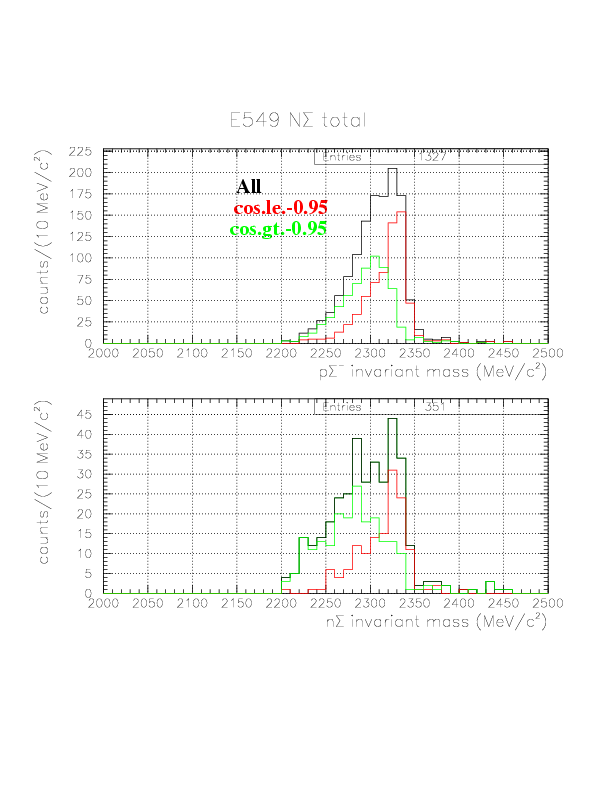On the n-&pi invariant mass spectrum under the nn+&pi on TC coincidence condition, we expect a difficulty of the &Sigma identification due to huge combinatorial background caused by both side of neutron and &pi:
1. &pi from &Lambda decay
2. &pi from quasi-free hyperon production
3. Accidental neutron BG
4. neutron from &Sigma-&Lambda conversion / primary neutron from nonmesonic absorption
Therefore, we do not expect to find out &Sigma component very clearly at the first stage on the invariant mass spectrum. In order to see &Sigma component clearly, the following selections are available:selection(1):Software threshold for neutron detection. This strongly affects the constant neutron BG suppression, while it also kills the signal as well by a certain fraction. Note that this affects the resulting n&Sigma mass spectrum moderately.
selection(2):vcavn selection - since we have two back-to-back neutrons, we have two vcavn values. As was shon in &Lambda p analysis, the nucleon with larger VcaVN value is likely to originate from hyperon decay.
selection(3):fast&pi/slow&pi selection - fast&pi selection is originary introduced to tagg the &Sigma events. Hence, the selection is considered to purify the &Sigma^+- weak decay in the reaction final state.
selection(4):neutron momentum - back-to-back coincidence of low energy neutron is mainly due to QF hyperon production followed by &Sigma-&Lambda conversion, in which no &Sigma exists in the final state. Hence, we expect an enhancement of &Sigma component by cutting off low-energy neutron. However, this selection strongly deforms the resulting n&Sigma invariant mass spectrum, hence it should be considered very carefully.
From the following, we start to fix these 4 degree of freedom for the event selection for n&Sigma invariant mass investigation.
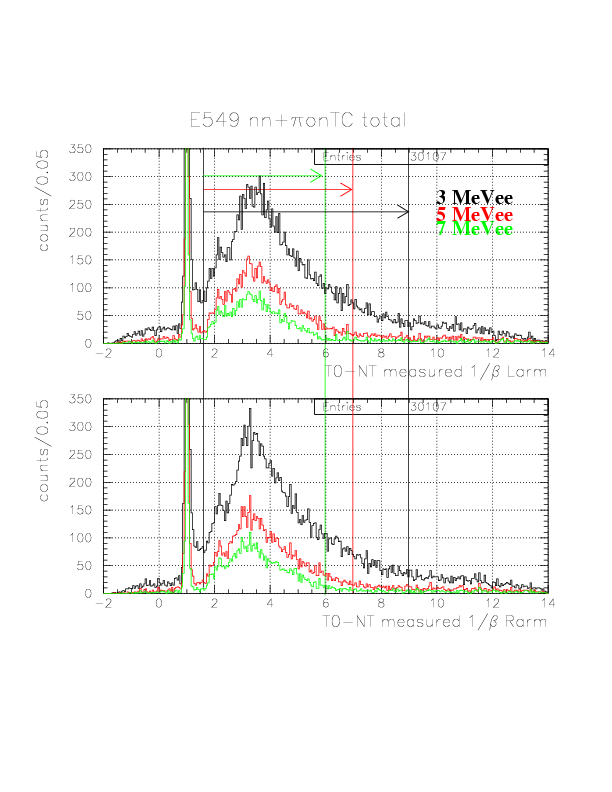

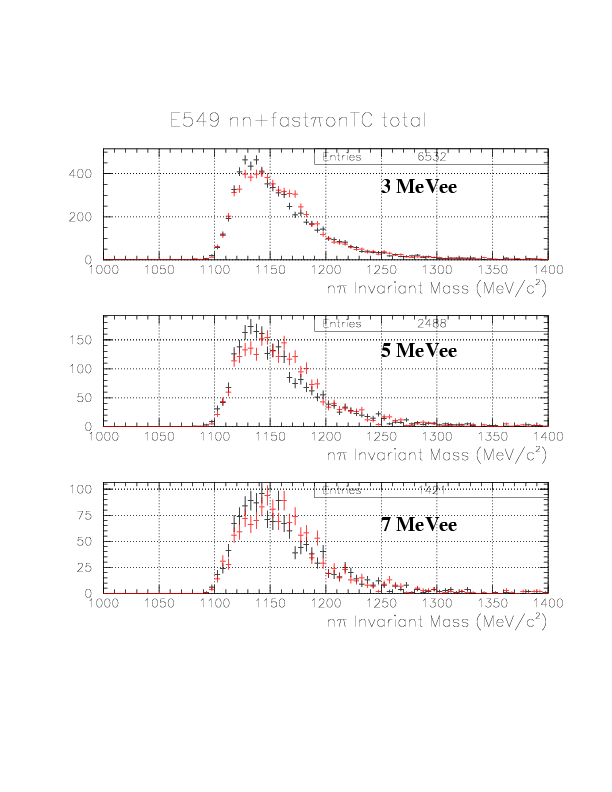

From the plots, we find three points, namely,
1. The &Sigma signal is found only if &pi in combined with the neutron with larger VcaVn value.
2. Almost no &Sigma signal is found for slow&pi-tagged event set.
3. The S/N ratio is too poor to be adopted as it is, even under fast&pi selection and the decay neutron is selected as the one with larger VcaVn.
It is so clear that we do need additional event selection with neutron momentum even if we apply fast&pi selection, and identify the decay neutron properly as the one with larger VcaVn. In order to improve this poor S/N ratio, we cannot introduce further event selection with neutron momentum values.
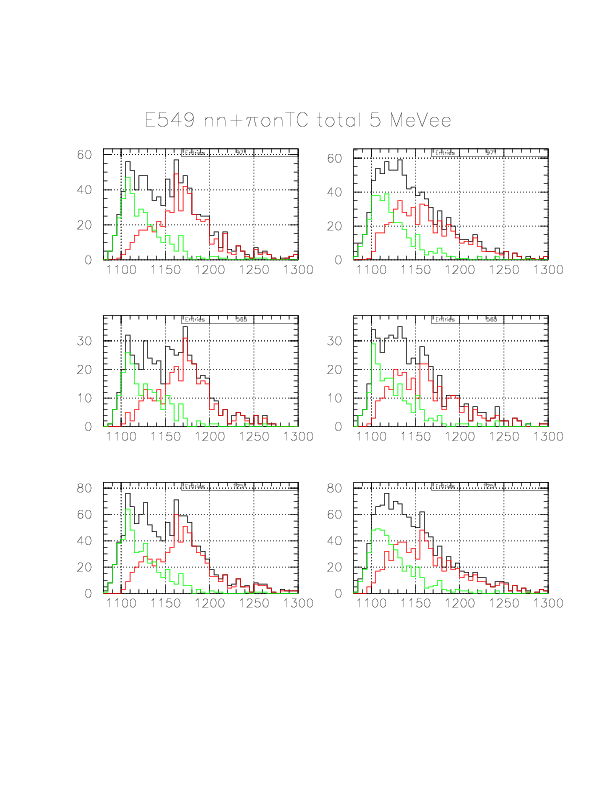
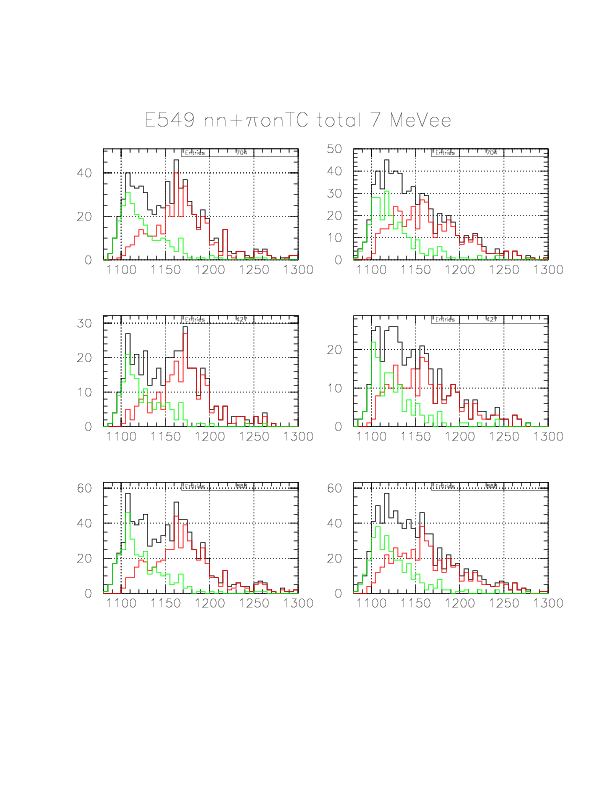
Now, it is obvious that the &Sigma signal can be found only for fast&pi-selected events only if the neutron with larger vcavn is combined with &pi. Hereafter in this report, the fast&pi selection is always applied, and a neutron with larger VcaVn value is everytimes combined with &pi. Now, let me call a neutron with larger VcaVn as decay neutron, while the pother as primary neutron. Under these default selections, we search for possible optimum further more, by lowering the momentum cut-off value for the decay/reaction neutron. The candidates of the cut-off pattern are as follows:
1(black):decay neutron momentum is larger than 300 MeV/c. No requirement for the reaction neutron.
2(red):no requirement for the decay neutron. Reaction neutron momentum is larger than 300 MeV/c.
3(magenta):decay neutron momentum is larger than 350 MeV/c. No requirement for the reaction neutron.
4(sky-blue):no requirement for the decay neutron. Reaction neutron momentum is larger than 350 MeV/c.
5(green):decay neutron momentum is larger than 300 MeV/c, and reaction neutron momentum is larger than 300 MeV/c.
6(black-shaded):decay neutron momentum is larger than 350 MeV/c, and reaction neutron momentum is larger than 350 MeV/c.
We adopt cut-off pattern 5 or 6, and identify the &Sigma by invariant mass within (1150.,1225.).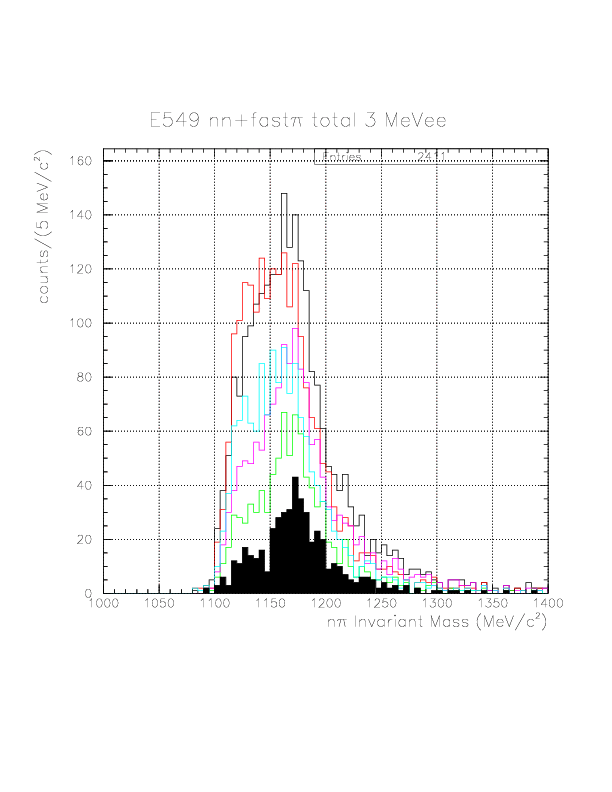
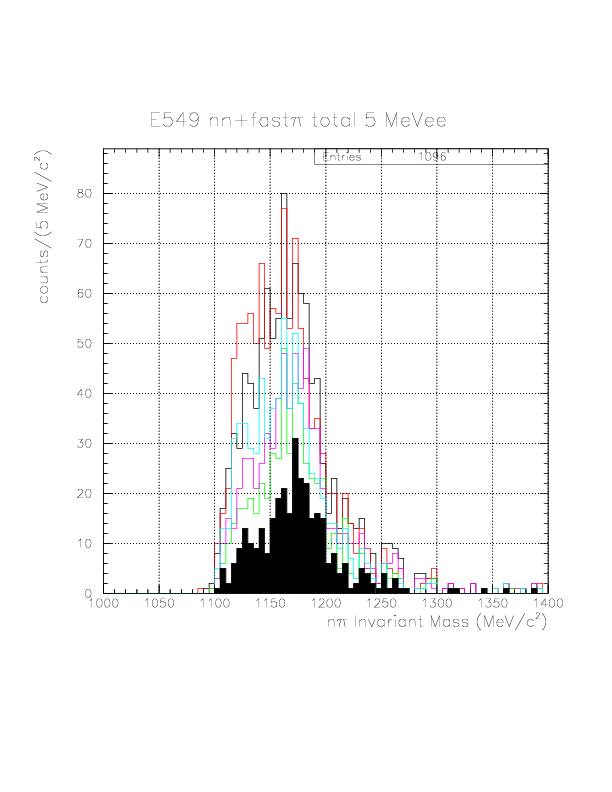

The final form of n&pi invariant mass spectra are show below for 3/5/7 MeVee threshold values.

| deltaE threshold/momentum threshold | 300 MeV/c | 350 MeV/c |
|---|---|---|
| 3 MeVee | 562 | 325 |
| 5 MeVee | 351 | 218 |
| 7 MeVee | 269 | 175 |
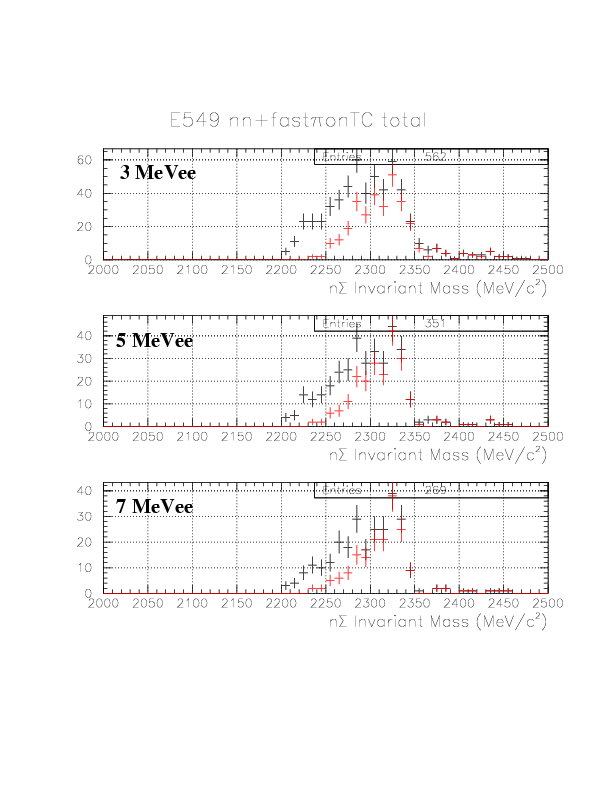

Hereafter, we impose fast&pi, 5MeVee threshold and 300 MeV/c momentum cutoff for neutron detection for &Sigma identification, and show the correlation between
1. n_3-momentum VS &Sigma^-_3-momentum
2. n&Sigma invariant mass vs n_3-momentum
3. n&Sigma invariant mass vs &Sigma_3-momentum
4. n&Sigma invariant mass vs cos(n&Sigma)
5. n&Sigma invariant mass vs n&Sigma total 3-momentum



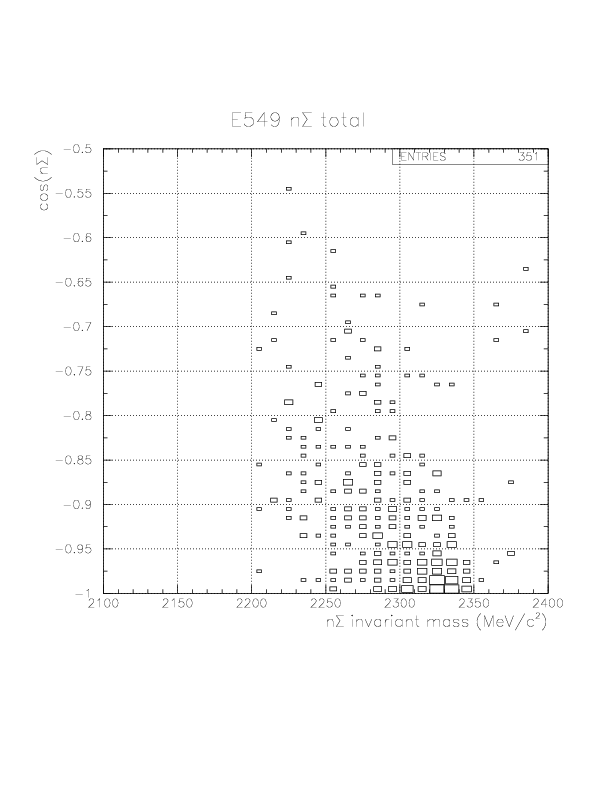
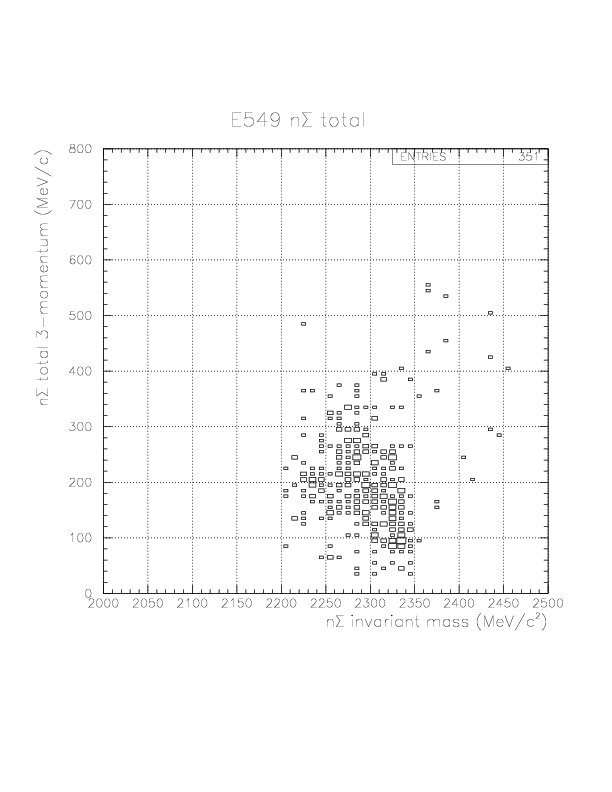
1D plots of cos(n&Sigma), cos(n&Sigma)-selected n&Sigma invariant mass, &Sigma momentum and n&Sigma total 3-momentum are shown below.
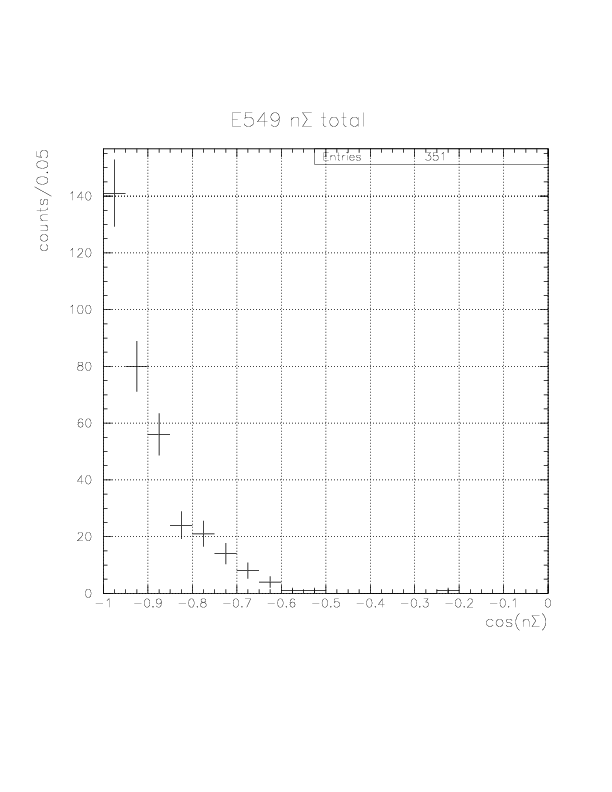

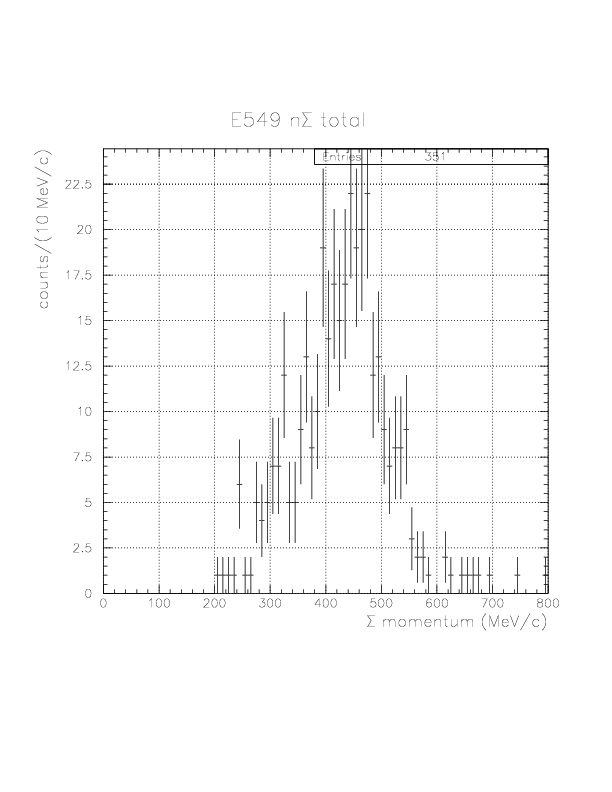
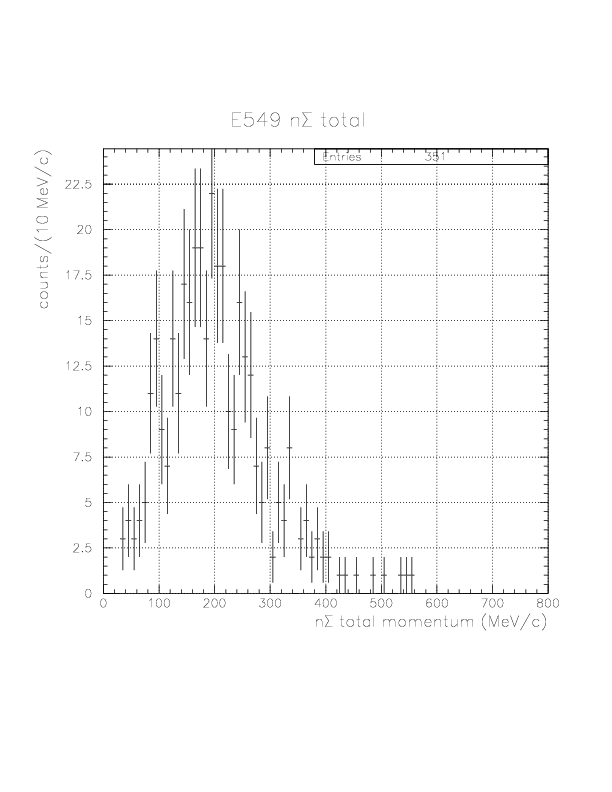
Lastly, we directly compare all p&Sigma^-/n&Sigma invariant mass spectra with openning angle selection.
